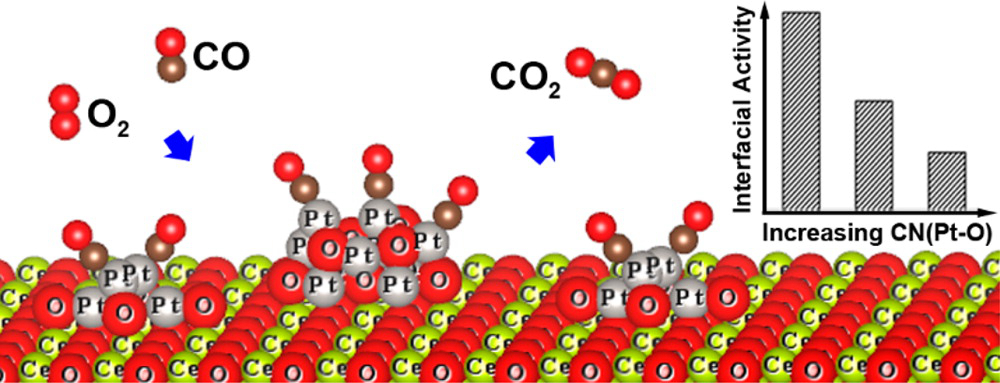Strong Local Coordination Structure Effects on Subnanometer PtOx Clusters over CeO2 Nanowires Probed by Low-Temperature CO Oxidation
17-09-2015
A fundamental understanding of the structural effects of supported metal catalysts at the molecular level is extremely important for developing high-performance catalysts that are widely used in industry, which is still a longstanding attractive but challenging topic in multidisciplinary fields. In this work, we report the strong effects of local coordination structures on the catalytic activity of subnanometric PtOx clusters over CeO2 nanowires in low-temperature CO oxidation as a probe reaction. Atoms and subnanometric clusters of Pt were deposited to form the coordination structure of PtOx on the well-defined CeO2 nanowires with mainly exposed (110) facets. The reactivity of active sites and the variation of the local coordination structures of the PtOx sites were deeply investigated with in situ spectroscopic experiments, assisted by density functional theory simulations. According to our observation, although the highly dispersed Pt sites at the subnanometric scale could provide increased accessible sites, some of the Pt sites did not show high activity for CO oxidation due to the increased surrounding oxygen that seemed to overstabilize the Pt atoms. An increased proportion of both adsorbed CO intermediates on oxidized Pt sites and the interfacial lattice oxygen of PtOx clusters tended to become inactive on samples with a high coordination number of oxygen bonded to Pt sites (CN(Pt–O)), leading to the loss of effective active sites and a decrease in the catalytic activity. A relatively small CN(Pt–O) value in the subnanometric PtOx/CeO2 NWs, which was found to be the appropriate structure for their catalytic performance, remarkably increased the activity by about 1/2 order of magnitude. We believe our investigation on the interfacial coordination structure effects of subnanometric PtOx clusters dispersed on CeO2 nanowires can provide some new basic chemical insights into the metal–support interfacial interactions of Pt/CeO2 catalysts for understanding their catalytic performance in some relevant reactions.The research was conducted at the 1W2B beamline of the BSRF, the 14W1 beamline of the SSRF and the X18B beamline of the NSLS.

Links: ACS Catal. 2015, 5, 5164−5173


 Copyright©2006.12 Shanghai Advanced Research Institute.
Copyright©2006.12 Shanghai Advanced Research Institute.